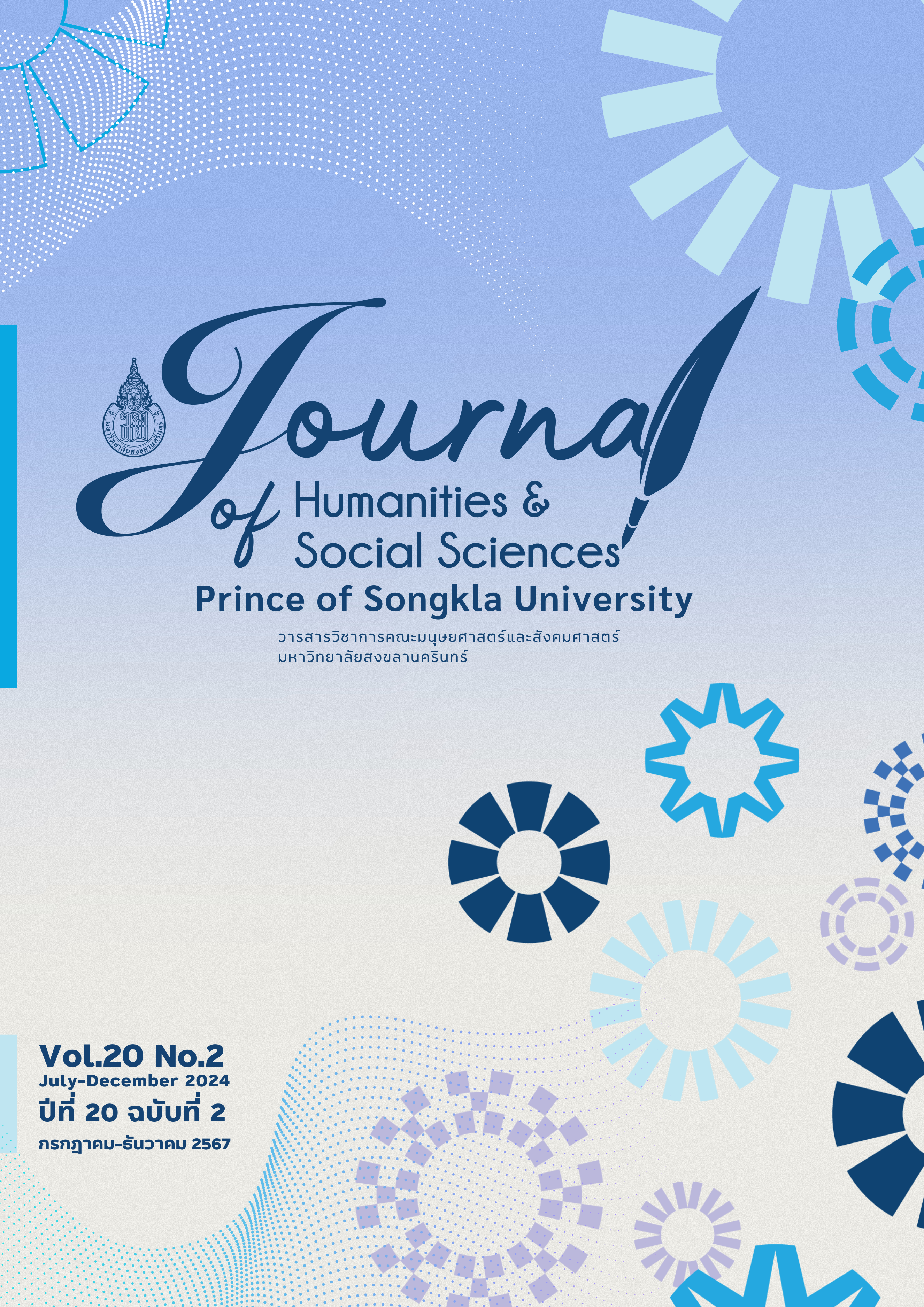APPLYING THE PROCESS OF BECOMING A SPECIALIST IN EVERYDAY LIFE
Keywords:
applying, Buddhist Scriptures, Theravada BuddhismAbstract
The research paper on Applying the Process of Becoming a Specialist in Everyday Life has two objectives: (1) to study and analyze the Specialist as depicted in the Theravāda Buddhist scriptures and (2) to present on Applying the Process of Becoming a Specialist in Everyday Life.
This research is a qualitative study that analyzes data from the Tripiṭaka, commentaries, Buddhist literature, and research on specialists using content analysis techniques to present on Applying the Process of Becoming a Specialist in Everyday Life.
Research has shown that being a specialist in Buddhism implies excellence in one way or another, surpassing others. It is the position that appointed by the Buddha to the Four Assemblies, as indicated in the Sutta Piṭaka. Seven chapters dedicated to the excellence of Bhikkhus, Bhikkhunis, the assembly of lay-followers, and the assembly of female lay-followers. The story of the past incarnation of the disciples who attained the title of specialist is also included, citing various reasons, including their mention in the commentary on the excellence of quick enlightenment of the PhraBāhiyadārucīriya and the excellence of the fortune of PhraSīvalī, serving as examples of individuals demonstrating strong will and determination. The process of becoming a specialist involves three key steps: (1) setting goals; (2) practicing with relentless perseverance until the goal is achieved, and (3) declaring success to serve as a model for others to follow.
References
เกรียงศักดิ์ นิรัติพัฒนะศัย. (2566). ระบุคนต้นแบบ (Role Model) แล้วเรียนรู้จากเขา. https://thecoach.in.th/2023/ระบุคนต้นแบบ-role-model-แล้วเรีย
คณาจารย์ มหาวิทยาลัยมหาจุฬาลงกรณราชวิทยาลัย. (2550). ประวัติพระพุทธศาสนา. พระนครศรีอยุธยา: ห้างหุ้นส่วนจำกัด นวสาส์นการพิมพ์.
เจริญ ผุดวรรณา. (2545). ประวัติภิกษุณีผู้เป็นเอตทัคคะ. กรุงเทพฯ: โรงพิมพ์เลี่ยงเชียง.
ติณณ์ อินทโสฬส. (2564). ศึกษารูปแบบของกุศลกรรมกับการได้เอตทัคคะของพระอริยบุคคลในพระพุทธศาสนาเถรวาท [วิทยานิพนธ์พุทธศาสตรมหาบัณฑิต]. มหาวิทยาลัยมหาจุฬาลงกรณราชวิทยาลัย.
ธาราญา. (2564). พระอสีติมหาสาวก 80 องค์ และเอตทัคคะ 41 องค์. https://dharayath.com/พระ-อสีติมหาสาวก
บรรจบ บรรณรุจิ. (2544). อสีติมหาสาวก. พระนครศรีอยุธยา: โรงพิมพ์มหาจุฬาลงกรณราชวิทยาลัย.
พระกิตติศักดิ์ ยโสธโร (แก้วเหลา). (2537). การศึกษาบทบาทของพระสารีบุตรเถระในการเผยแผ่พระพุทธศาสนา [วิทยานิพนธ์พุทธศาสตรมหาบัณฑิต]. มหาวิทยาลัยมหาจุฬาลงกรณราชวิทยาลัย.
พระครูกัลยาณสิทธิวัฒน์ (สมาน พรหมอยู่/กัลยาณธัมโม). (2557). เอตทัคคะ ในพระพุทธศาสนา. พระนครศรีอยุธยา: โรงพิมพ์มหาจุฬาลงกรณ์ราชวิทยาลัย.
พระเทพโสภณ (ประยูร ธมฺมจิตฺโต). (2543). พระพุทธประวัติ. พิมพ์ครั้งที่ 4. กรุงเทพฯ: มูลนิธิพุทธธรรม.
พระธรรมกิตติวงศ์ (ทองดี สุรเตโช). (2551). พจนานุกรมเพื่อการศึกษาพุทธศาสตร์ ชุดคำวัด. กรุงเทพฯ: ธรรมสภา และสถาบันบันลือธรรม.
พระประยูร อาจิณฺณธมฺโม (รุ่งเรือง). (2564). บทบาทการเผยแผ่พระพุทธศาสนาของพระสาวกในพระสุตตันตปิฎก [วิทยานิพนธ์พุทธศาสตรมหาบัณฑิต]. มหาวิทยาลัยมหาจุฬาลงกรณราชวิทยาลัย.
พระมหาจรูญ ปญฺญาวโร (อินทร์ยงค์). (2540). การศึกษาบทบาทของพระมหากัสสปเถระในการเผยแผ่พระพุทธศาสนา [วิทยานิพนธ์พุทธศาสตรมหาบัณฑิต]. มหาวิทยาลัยมหาจุฬาลงกรณราชวิทยาลัย.
พระมหาจิตติภัทร อจลธมฺโม (จันทร์คุ้ม). (2537). การศึกษาบทบาทของพระอานนท์ในการเผยแผ่พระพุทธศาสนา [วิทยานิพนธ์พุทธศาสตรมหาบัณฑิต]. มหาวิทยาลัยมหาจุฬาลงกรณราชวิทยาลัย.
พระมหาสุชญา โรจนญาโณ (ยาสุกแสง). (2540). การศึกษาบทบาทของพระมหาโมคคัลลานเถระในการเผยแผ่พระพุทธศาสนา [วิทยานิพนธ์พุทธศาสตรมหาบัณฑิต]. มหาวิทยาลัยมหาจุฬาลงกรณราชวิทยาลัย.
มหาจุฬาลงกรณราชวิทยาลัย. (2539). พระไตรปิฎกภาษาไทย ฉบับมหาจุฬาลงกรณราชวิทยาลัย. พระนครศรีอยุธยา: โรงพิมพ์มหาจุฬาลงกรณราชวิทยาลัย.
มหามกุฏราชวิทยาลัย. (2534). พระไตรปิฎกพร้อมอรรถกถา แปล ชุด 91 เล่ม ฉบับมหามกุฏราชวิทยาลัย. พระนครศรีอยุธยา: โรงพิมพ์มหามกุฏราชวิทยาลัย.
สมเด็จพระญาณสังวร สมเด็จพระสังฆราช สกลมหาสังฆปรินายก. (2541). ความหมายแห่งพระรัตนตรัย. พิมพ์ครั้งที่ 2. นครปฐม: โรงพิมพ์มหามกุฏราชวิทยาลัย.
สิน งามประโคน. (2559). การวิเคราะห์พุทธวิธีการบริหารการศึกษาในพระพุทธศาสนาเถรวาท. วารสารธรรมทรรศน์, 16(2), 33-44.
สุขสันต์ สุขสงคราม. (2563). แนวคิดการบริหารแบบวงจรคุณภาพ (PDCA) กับการบริหารแบบพระพุทธศาสนา. วารสารธรรมวัตร, 2(1), 39-49.
Downloads
Published
How to Cite
Issue
Section
License
Copyright (c) 2024 Journal of Humanities and Social Sciences Prince of Songkla University

This work is licensed under a Creative Commons Attribution-NonCommercial-NoDerivatives 4.0 International License.
บทความนี้ได้รับการตีพิมพ์เป็นของวารสารวิชาการคณะมนุษยศาสตร์และสังคมศาสตร์ คณะมนุษยศาสตร์และสังคมศาสตร์ มหาวิทยาลัยสงขลานครินทร์ วิทยาเขตปัตตานี






